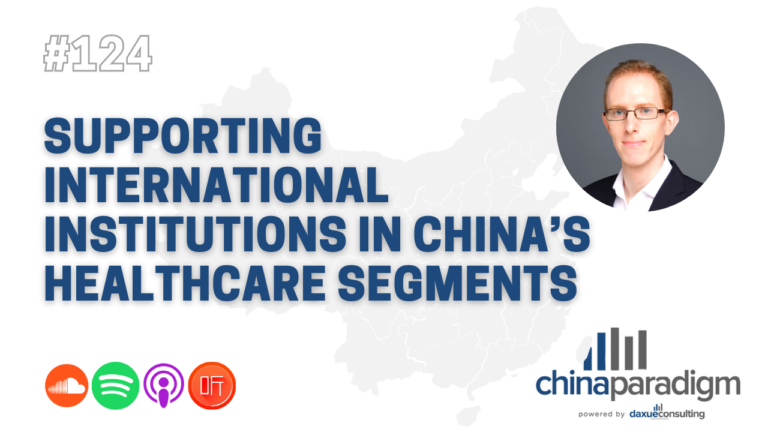China Paradigm interviewed Lucas Englehardt, CEO and co-founder of xixilab, a local Chinese company specializing in teeth aligners and home teeth whitening. He tells us what differentiates his company from the rest of the invisible orthodontics market in China and how he applies his experience from previously managing a food delivery platform.
According to a report published in 2018 by technavio, the invisible orthodontics market in China will grow by USD 245.23 million during 2018-2022, meaning a CAGR of 15%. The main driver is the demand for aesthetic appeal: increasingly more young Chinese consumers are willing to spend in this industry. Clear aligners held the major share of the invisible orthodontics market in China in 2017 and will continue to dominate the market.
Xixilab: Cost-effective and timesaving oral care in China
According to Lucas Englehardt, they are able to sell for one-third of the market price by selling directly to the consumer. They source the best material they can find internationally then adapts and produces the modeling in China, making their product fully customized. For their invisible braces in China, xixilab align, they take a 3D scan of the customer’s teeth and build a 3D model of the teeth to create a plan step by step to ideally position the teeth. On average, a case takes 6-12 months, with a full plan to switch liners once every two weeks.

The beauty of their customer-business engagement is that it saves both time and money. After receiving a plan, most customers don’t need to see consultants from xixilab again as their progress can be checked online with a smartphone. If issues come up, they are always available online, and offline dental arrangements can be made.
The invisible orthodontics market in China: Asymmetric supply and demand
Lucas Englehardt believes that the invisible orthodontics market in China is mostly confounded to supply and demand. There is a lack of dentists and orthodontists in China compared to the total population, and thus in the coming decades, there is going to be a huge need for more teeth specialists.
Traditionally, public hospitals where people would go to for dentistry, as that is the first place they have in mind when a medical issue arises. However, the dental industry was one of the first medical industries the government allowed clinics to be opened and licensed. More of these are opening, which educates the market about the importance of simple preventative care. Englehardt sees the opportunity of directly going to the consumer with teeth whitening and teeth straightening products in China that can be done safely and effectively from home.
Offline marketing is just as important as online for oral care products in China
As a small company, Lucas Englehardt felt that they needed to focus their efforts on a single product: teeth-straightening products in China.
Although xixilab’s products are less than a third of the market price, at the end of the day, they sell medical products, which can be a big investment for many. Thus, building trust with customers and allowing them to understand why their online model is safe and effective is key to their marketing. In order to do this, Lucas Englehardt feels that it is important for customers to meet them face to face to physically see the product through events, which makes for an easier subsequent relationship online as an oral care business in China (learn more about oral care market in China).
“China is much harder to operate in as a start-up. I think if you are in the west, most businesses can very quickly say, “Let’s set up a Facebook Ads account or a Google Ads account” and pump money in with a pretty clear ROY and that is easy to scale. So sadly, China is not no simple. If you use Baidu for marketing, you still have to deal with a salesperson. You can’t just sign off with a credit card and there is a lot of human involvement and so Baidu also cost per click for top key words gets very expensive. It’s very addictive. So, in one of my last businesses to improve delivery, I remember two channels were SEM, search engine marketing with Baidu, and some of the others at 360. So, it can work, but actually, our number one channel for one HRM was doing offline flyers. I think this was probably one of the oldest marketing tools in the book. It’s something that’s hard to scale, but that’s also very effective”.
From managing food delivery platforms to the invisible orthodontics market in China
Before co-founding xixilab, Englehardt’s last start-up was food delivery platform Waimaichaoren. From his perspective, food delivery in China struggles to differentiate and people can be price-sensitive (read more on the food delivery market in China). He was able to establish his platform in the white-collar office worker market, which was less price-sensitive and cared more about quality, thus targeting this niche in a mass market. As a reader, I expect to find an answer to the question – why he ended up with a food delivery business and started an orthodontics business?
“For me, it is then a question of how do you be the best and where do you find a niche where your quality is appreciated by the customer and that they are willing to put a premium for that quality product or quality experience.”
Applying the experience from managing a food delivery platform, Lucas Englehardt wished to find a niche where people are willing to pay for quality for his medical products. With the vision of providing a product to help others and one he was proud of selling, he focused on teeth straightening with his oral care business in China.










